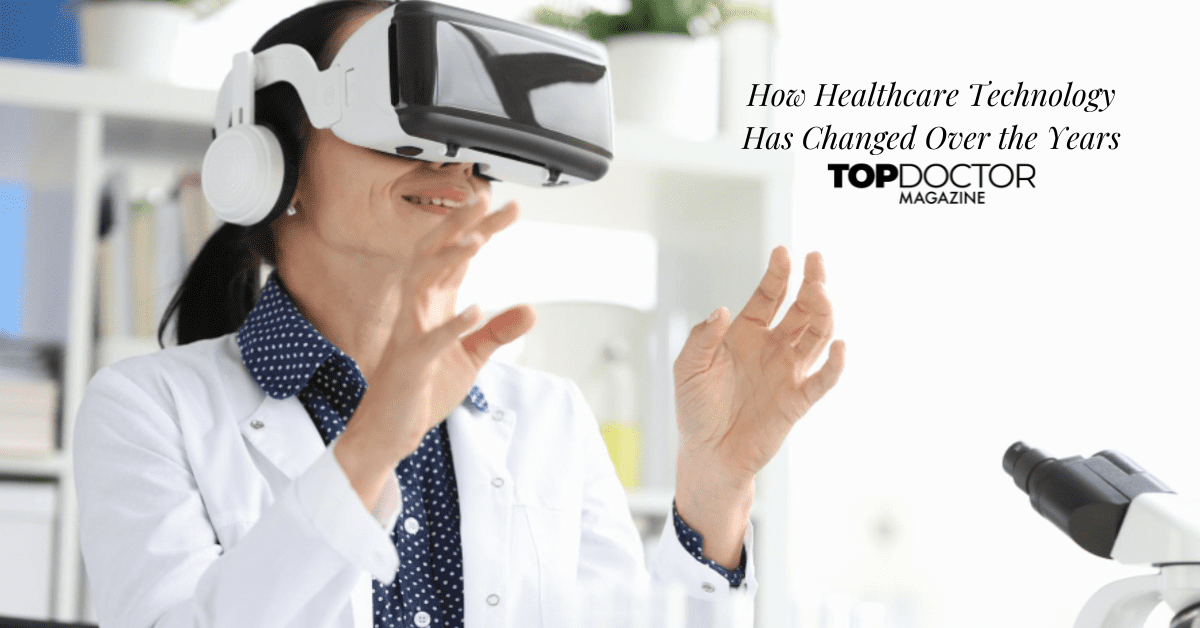It’s hard to imagine healthcare without modern technology. Everything, from the big medical machines that scan our bodies to the highly specialized medicines and antibiotics that defend our bodies from infections and viruses, is critical for how we experience healthcare. But much of this modern technology is a recent development, which begs the question: what did medical healthcare look like before some of this advanced technology was created? And how will healthcare continue to develop in response to new technology?
We don’t need to dig through the past millennia of human history to answer these questions. Instead, we can simply look back 100 or 200 hundred years and track how technology has developed and changed until today and how it will continue in the future.
Historic Healthcare Technology
Healthcare technology has developed significantly in the past 100 years, but that’s not to say that the 18th century’s healthcare wasn’t very advanced for its time. While we perhaps look back at these technologies as primitive, the technologies of 100 years ago provide the foundation for many of the key pieces of healthcare technology we use today.
X-Ray
The X-ray is an excellent example of an eon-old technology that continues to be critical today. X-rays were discovered in 1895 by Wilhelm Conrad Röntgen and were first used in a medical context on the battlefields of the Balkan War in 1897.
Admittedly, when this technology was first used, the danger of skin cancer or burns from X-rays was unknown. It wasn’t until the second half of the 20th century that we better understood its risks. While they changed the face of healthcare when first introduced, X-rays weren’t perfected until many decades later.
Pacemaker
You’re likely familiar with pacemakers — the technology which helps the heart regulate its beats. But you may not know that it was invented in 1932 and was initially operated by a hand crank. It wasn’t until 1958 that the first pacemaker was implanted into a patient. Here, we see another technology that changed over the years by being perfected and improved for patient care.
Modern Healthcare Technology
Now that we’ve seen the use of technology throughout history, let’s examine how modern technology affects healthcare provision through its improvements.
Antibiotics, Internal Medicine Machines and Computerized Machines
Modern healthcare is almost impossible to imagine without some of these features. For example, how would we treat infections without antibiotics? Or can we even imagine a hospital that doesn’t offer internal medicine machines like valves and dialysis, which help support the body’s functions? These treatment methods and technologies are at the core of modern healthcare.
If you’re still not convinced that technology is the center of modern healthcare treatments, look no further than the doctor’s office. A close inspection of any hospital or doctor’s office will reveal that nearly every machine is computerized to some scale, not to mention the number of actual computers or tablets you might see in a hospital room. Computers are in almost every piece of medical technology and are impossible to ignore.
Big Data Usage
Big data and modern technology have made it possible to collect an immense amount of information digitally, making it easy to access for both patients and practitioners. Using mass data collection, modern healthcare has developed very sophisticated data collection methods, health apps and electronic records. These advances have removed the need for physical paper records of patient information in favor of delivering that information in a digital form.
Easy Communication
Technology in modern medicine has improved both doctor-to-doctor and patient-to-provider communication. It has allowed patients and providers to communicate quickly and efficiently without the patient ever coming into the office. This new method, called telehealth, allows the provider to inspect their patient and communicate their treatment plan digitally. It facilitates what no one could have anticipated 100 years ago: digital and remote healthcare provision.
The same goes for doctor-to-doctor communication. It has never been easier than it is now for medical practitioners to communicate with each other, share knowledge and expertise and get second opinions. Through the power of the internet and data collection, doctors can examine records of other doctors’ studies and treatments to be as educated and prepared as possible, creating better patient care.
Looking Forward to the Future of Healthcare Technology
These historical and modern developments in healthcare technology are not the end. Looking into the near future, we can already see how developing technologies will continue to shape our healthcare. Two of the most formative future technologies are CRISPR and Metaverse.
CRISPR
CRISPR (i.e., Clustered Regularly Interspaced Short Palindromic Repeats) allows scientists to modify and mend genomes and genetic information. While it is still experimental, this technology has been used in a process dubbed ‘gene editing’ as recently as 2017, with the potential to help reverse or prevent genetic defects and conditions. CRISPR could make many conditions a thing of the past and re-envision everything we understand about the fundamental structure of life.
Metaverse
Although already used in healthcare, the Metaverse has the potential to be just as futuristic as CRISPR. Through the usage of AR and VR technology in the Metaverse, doctors will be able to perform surgery virtually. At the same time, patients will be able to visualize human anatomy in ways that will improve education, patient care and surgical skills. It’s no understatement that the Metaverse will completely reimagine how we understand healthcare and even our own bodies.
How Technology Will Continue to Shape the Future
Healthcare is impossible to imagine without technology. Even 200 years ago, technology was a critical part of healthcare provision. As technology advances and is perfected, healthcare improves. It will continue to improve patient care, quality of life and life expectancy with it.
The future of technology in healthcare is bright. Over the past 200 years, medical technology has come far, and in the past 40, it has come even further. As we look forward to perhaps the next 200 years of medical technology development, one can only dream of the possibilities. But some of those possibilities might be closer than one might think!






0 Comments